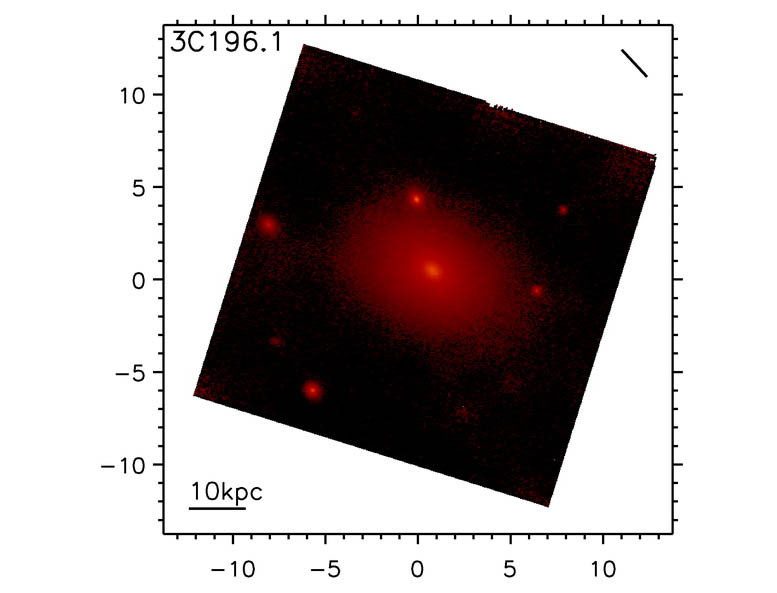Hubble Reveals Evidence of Active Nucleus Driving Hot Bubbles of Gas

A
Hubble image of the galaxy 3C129.1, a massive elliptical galaxy in a
bright cluster. Astronomers have used Chandra, Hubble and VLA facilities
to study the hot gas and found clear evidence that the active nucleus
is driving hot bubbles of gas and jets. NASA/Hubble, J. Madrid et al.
2006
CfA astronomers Frederica Ricci, Lorenzo Lovisari, Ralph Kraft, Grant Tremblay, Bill Forman, and Belinda Wilkes led a team that for the past eight years has used the Chandra X-ray Observatory, Hubble, and the VLA radio facility to probe nuclear outbursts and merger activity in the galaxy 3C196.1 through the analysis of the distribution and excitation of its hot gas. Their images show that the gas lies in hot bubbles rising outward from the nuclear region into zones of cooler material, along with shocks arising from the creation of the bubbles that (like stormy weather) shape its environment. The team finds evidence for multiple episodes of outburst activity based on the radio images, and compelling evidence for a past merger. The optical images tie the hot emission lines directly to the AGN activity. They even see a jet from the nucleus extending outward about thirty light-years and closely aligned with the larger radio jet that extends over thousands of light-years. From the temperatures, pressures, and other properties of the hot bubbles and their environments, the scientists estimate the lifetimes of the cavities, the inner one being about 12 million years old and the outer one being about 280 million years old. The results help to reveal the physical processes at work in powering the emission from this galaxy and to offer insight into the wider family of active galactic nuclei.
Publication: “Stormy Weather in 3C 196.1: Nuclear Outbursts and Merger Events Shape the Environment of the Hybrid Radio Galaxy 3C 196.1,” F. Ricci, L. Lovisari, R. P. Kraft, F. Massaro, A. Paggi, E. Liuzzo, G. Tremblay, W. R. Forman, S. Baum, C. O’Dea, and B. Wilkes, ApJ 867, 35, 2018.


Your Opinion is valid .